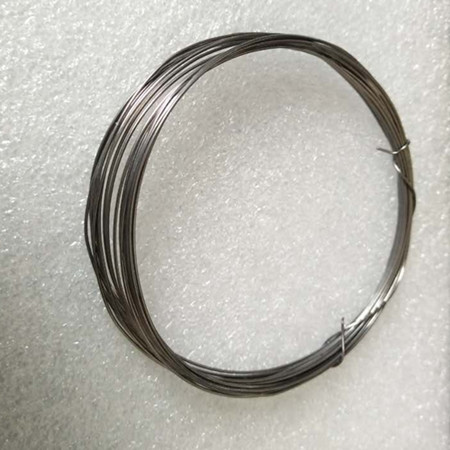In general, the special properties of nickel-titanium alloy are as follows:
1.Shape memory characteristics: when the parent phase of a certain shape is cooled from above Af temperature to below Mf temperature to form martensite, the martensite deforms below Mf temperature and is heated to below Af temperature. With the adverse phase change, the material will automatically restore its shape in the parent phase. In fact, shape memory effect is a thermally induced phase transition process of nickel-titanium alloy.
2.Hyperelasticity: the so-called hyperelasticity refers to the phenomenon that the strain produced by the specimen under the action of external force is far greater than the elastic limit strain variable, and the strain can be automatically recovered when unloading. That is, in the parent phase state, due to the effect of external stress, the stress induced martensite phase transition occurs, so that the alloy behaves differently from the mechanical behavior of ordinary materials, its elastic limit is far greater than that of ordinary materials, and no longer obeys hooke's law.
3.Corrosion resistance: studies have shown that the corrosion resistance of nickel-titanium wire is similar to that of stainless steel wire.
4.Sensitivity to changes in oral temperature: the correction force of stainless steel wire and CoCr alloy dental orthodontic wire is basically not affected by the oral temperature. The orthodontic force of superelastic nickel-titanium alloy dental orthodontic wire changes with the change of oral temperature. When the deformation is constant. As the temperature increases, the correction force increases. On the one hand, it can speed up the movement of teeth, because the temperature change in the mouth will stimulate the blood flow in the stagnant part of blood flow caused by capillary stagnation caused by orthodontic devices, so that the repair cells in the process of tooth movement are fully nourished to maintain their vitality and normal function. On the other hand, orthodontists cannot accurately control or measure the orthodontic force in the oral environment.
5.Toxicity resistance: the special chemical composition of nickel-titanium shape memory alloy, that is, it is a nickel-titanium and other atomic alloy, containing about 50% of nickel, and nickel is known to have carcinogenic and carcinogenic effect. In general, titanium oxidation on the surface layer ACTS as a barrier, making the Ni-Ti alloy have good biocompatibility. TiXOy and TixNiOy in the surface layer can inhibit the release of Ni.
6.Gentle orthodontic force: the dental orthodontic wires currently in commercial use include austenitic stainless steel wire, cobalt-chrome-nickel alloy wire, nickel-chromium alloy wire, Australian alloy wire, gold alloy wire and Titanium alloy wire. Load-displacement curves of these orthodontic wires under tensile and three-point bending test conditions. Nitinol has the lowest and flattest unloading curve platform, which indicates that it can provide the most durable and gentle correction force.
7.Good shock absorption characteristics: the greater the vibration of the arch wire caused by chewing and night molars, the greater the damage to the root and periodontal tissues. Through different attenuation experiment results, the study found the arch wire stainless steel wire vibration amplitude is larger than hyperelastic nickel titanium wire, super elastic nickel-titanium arch wire the initial vibration amplitude is only half of stainless steel wire, good vibration and shock absorption characteristics of the arch wire is important for the health of the teeth, and traditional arch wire such as stainless steel wire, tend to increase the root absorption.
We can provide titanium nickel shape memory alloy wire, straight / coiling /spool
Min Dia 0.1mm.
and customized as your requirement.
